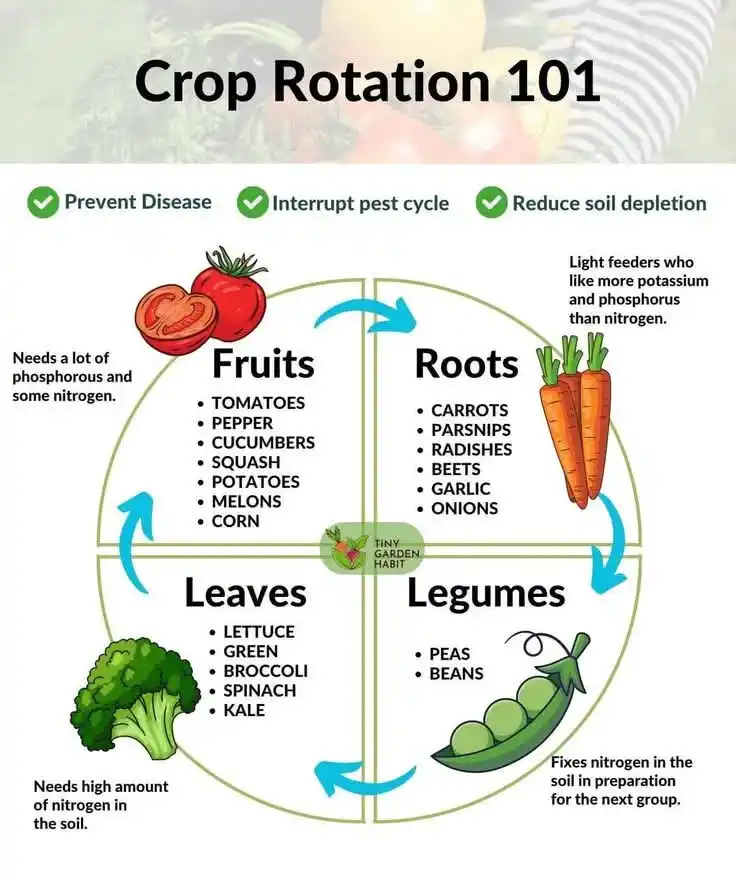
Rahul Mishra Professional Desk
June 14, 2025 at 07:31 PM
explains the principles of crop rotation, which helps prevent disease, interrupts pest cycles, and reduces soil depletion. It divides crops into four categories: fruits, roots, leaves, and legumes. Fruits such as tomatoes, peppers, cucumbers, and corn need a lot of phosphorus and some nitrogen in the soil. Root vegetables like carrots, beets, and onions thrive in soil with high potassium and phosphorus. Leafy greens like lettuce, spinach, and broccoli require a high amount of nitrogen for healthy growth. Lastly, legumes such as peas and beans help fix nitrogen back into the soil, preparing it for the next round of crops. Practicing crop rotation optimizes soil health and plant productivity over time.
